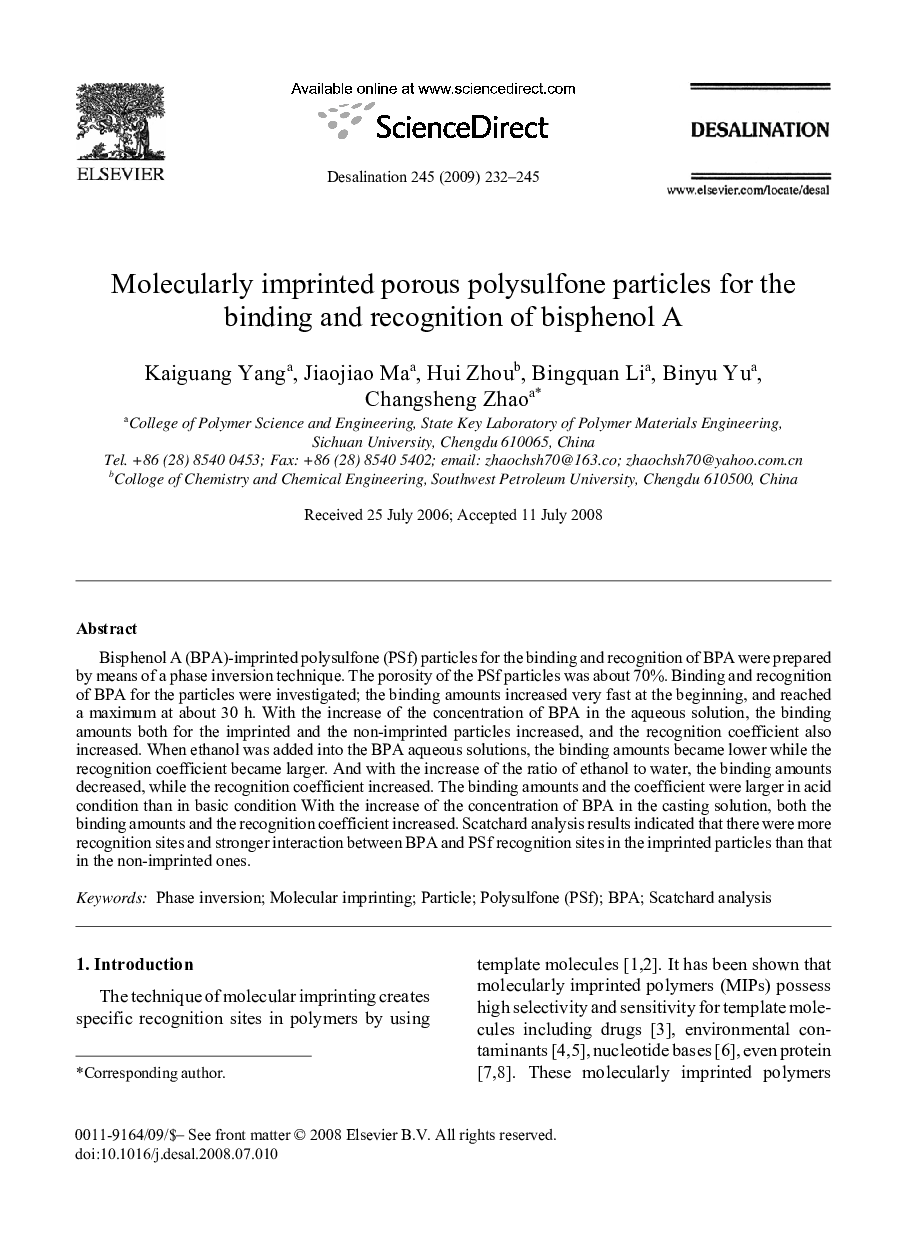| Article ID | Journal | Published Year | Pages | File Type |
|---|---|---|---|---|
| 626274 | Desalination | 2009 | 14 Pages |
Bisphenol A (BPA)-imprinted polysulfone (PSf) particles for the binding and recognition of BPA were prepared by means of a phase inversion technique. The porosity of the PSf particles was about 70%. Binding and recognition of BPA for the particles were investigated; the binding amounts increased very fast at the beginning, and reached a maximum at about 30 h. With the increase of the concentration of BPA in the aqueous solution, the binding amounts both for the imprinted and the non-imprinted particles increased, and the recognition coefficient also increased. When ethanol was added into the BPA aqueous solutions, the binding amounts became lower while the recognition coefficient became larger. And with the increase of the ratio of ethanol to water, the binding amounts decreased, while the recognition coefficient increased. The binding amounts and the coefficient were larger in acid condition than in basic condition With the increase of the concentration of BPA in the casting solution, both the binding amounts and the recognition coefficient increased. Scatchard analysis results indicated that there were more recognition sites and stronger interaction between BPA and PSf recognition sites in the imprinted particles than that in the non-imprinted ones.
